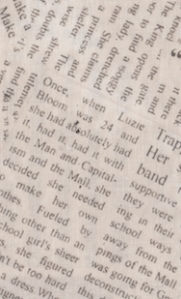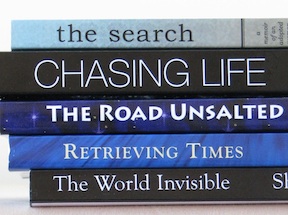
Sonja Hakala’s Your Book, Your Way is being revised and renamed. You can enjoy read of What Would William Shakespeare Do? in real time right here. If you want to start at the beginning, you can by clicking right here.
Digital printing is the technology that allows you to make copies of anything you wish from your computer. It is the same technology that drives copying machines and scanners. And it’s part and parcel of all digital cameras. It is the technology that has sent the traditional book publishing world into such turmoil because it has returned the power to print to authors.
Yeah, digital print technology is everywhere. In fact, it’s difficult to remember a time when you couldn’t make a copy of anything you chose just by laying the original on a glass screen and pushing a button. But sentient beings born before 1960 can tell you stories about mimeograph machines with their smelly purple ink or how they tucked sheets of carbon paper between pieces of white paper before rolling them into a typewriter.
I know, I know, the stuff of dinosaur legends.
The roots of digital printing actually reach as far back as 1778 when a German scientist named Georg Christoph Lichtenberg discovered the basic principles of a dry printing method called electrostatic printing. It used static electricity—the sparky stuff that makes your hair stand up on end when you pull a fleece jacket off in winter—produced by a contraption called an electrophorus. When the buildup of static was discharged near fine particulates, the result was distinct patterns.
These principles had to wait until 1938 to get a push in the right direction when an American physicist and patent attorney named Chester Carlson combined electrostatic printing with photography to create a dry printing process he called electrophotography. Carlson, in essence, invented the technology that is the basis for all copying machines.
As seems to be the norm with anything new, it took Carlson quite a while to get anyone to see the potential of his invention. In fact, it was six years before anyone took an interest in his work.
Carlson’s technology was cumbersome, as are the prototypes for most inventions. But finally, in 1959, the first machines that we would recognize as copiers were introduced to the public. By this time, the name of the technology had been changed to xerography, the Greek equivalent of “dry printing”. You might more readily recognize that word as part of a company created to produce copying machines, the Xerox Corporation.
Now xerography is only half of the digital printing equation. The other half, as you might suspect, is the computer. When you marry these technologies to one another, you eventually get to the printers most of us have at home. And if you put those home printers on steroids, you get very large, very fast, and very efficient digital printers that can economically print and bind a single copy of a book in less than a minute.
And here’s the kicker—digital printing does not use printing plates to create copies. The setup to print digitally is within the means of anyone who owns a computer, has some technical knowledge, and some software.
In other words, with digital printing, no one needs to figure out how many copies of a book to print based on a best guess of how many will sell. Now you can print as many copies as you want, one at a time, as needed.
At this point, the cost of digitally printing a single copy of a book is still more than the single-copy cost of a book printed by offset. But when you can print one-at-a-time, this greater expense is easily recouped.
 There’s a long discussion about copyright in my guild to independent publishing, Publish Your Book Your Way, but here’s the core lesson you need to know—you are not required to register your work with the U.S. Copyright office in order for your rights to be protected.
There’s a long discussion about copyright in my guild to independent publishing, Publish Your Book Your Way, but here’s the core lesson you need to know—you are not required to register your work with the U.S. Copyright office in order for your rights to be protected.

